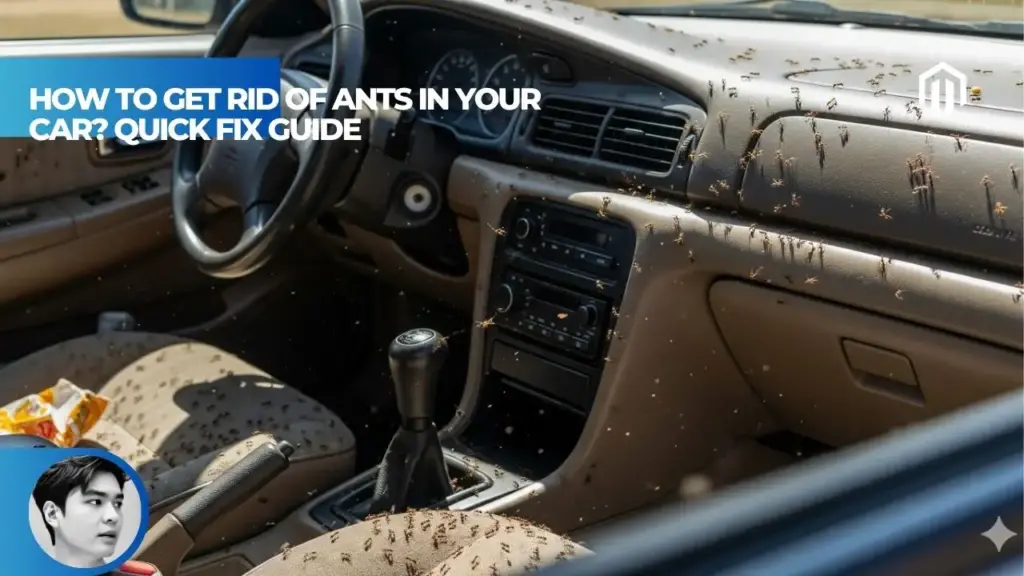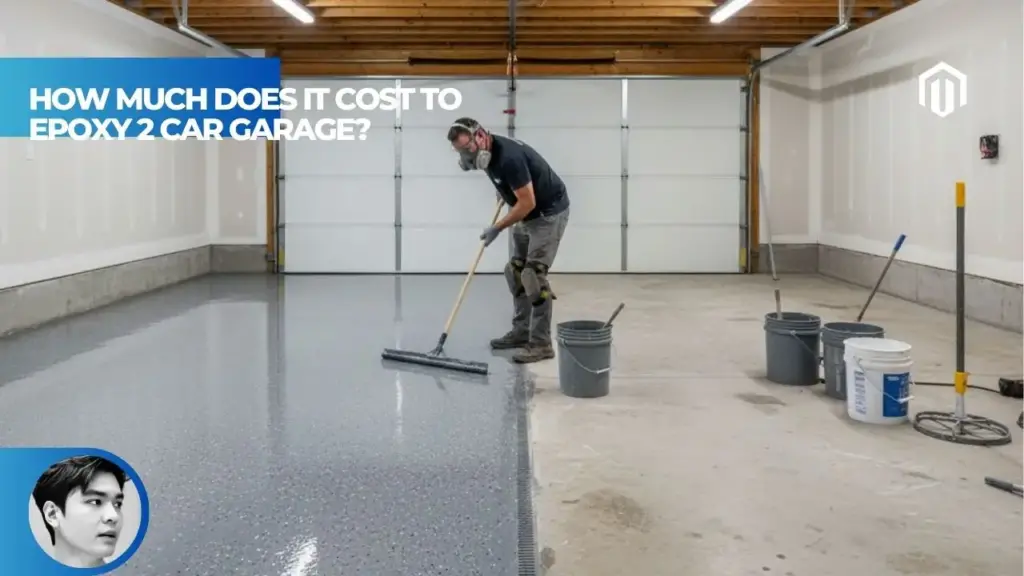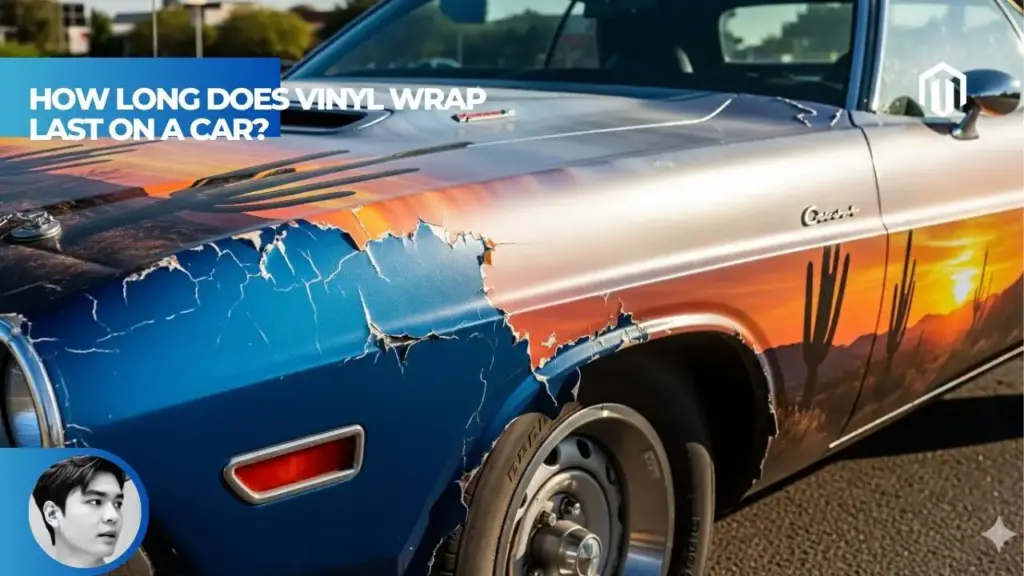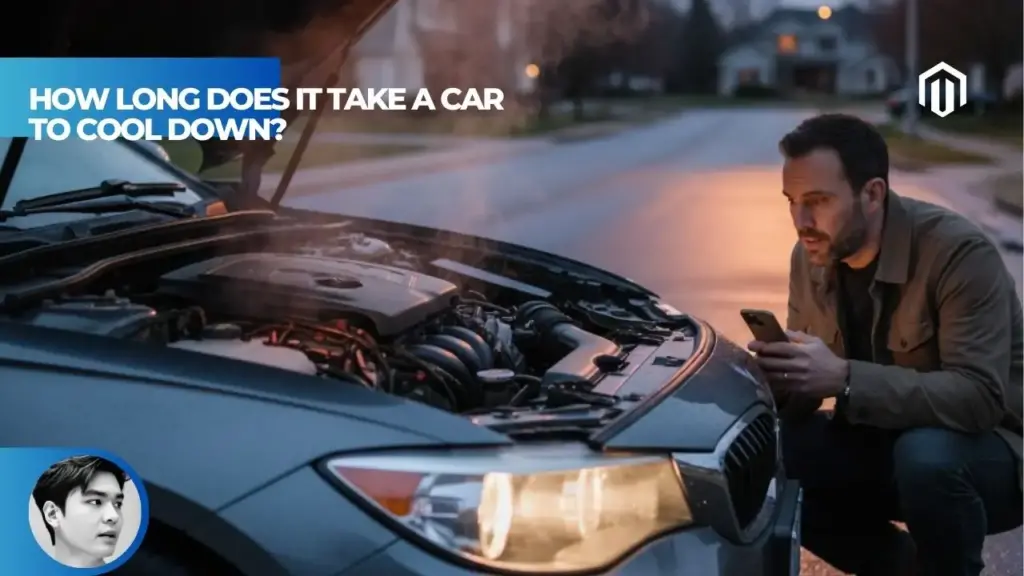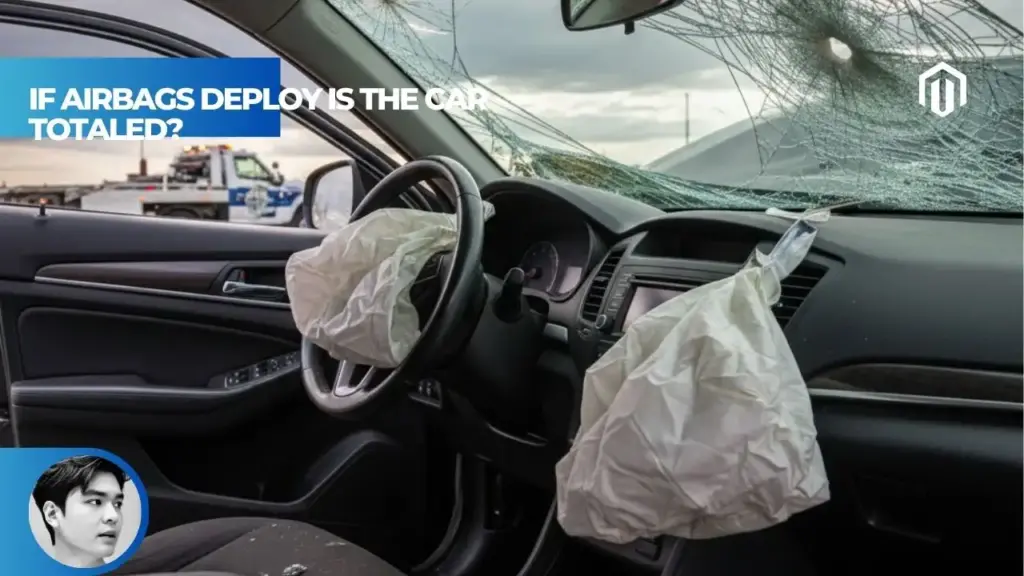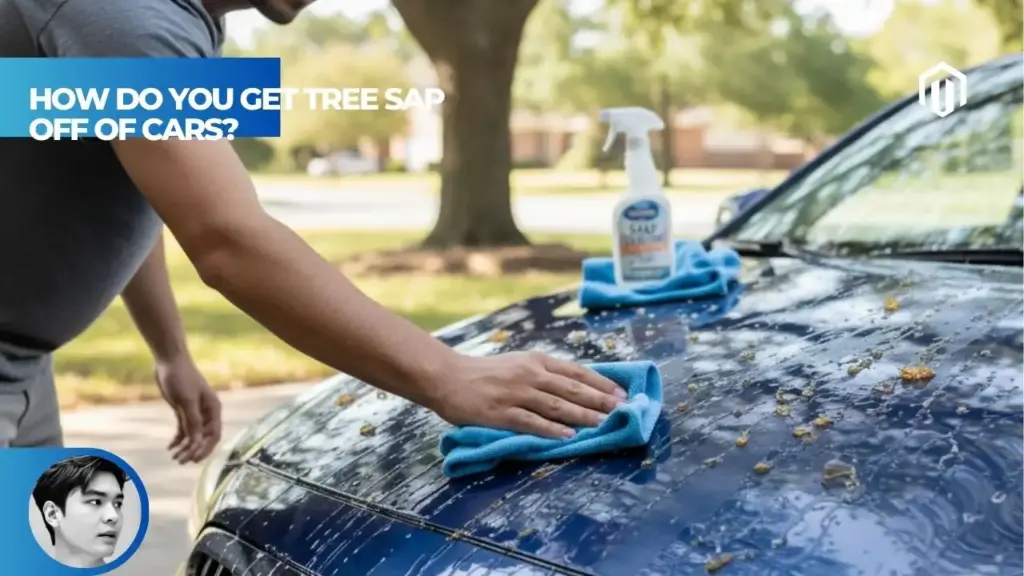You may also like:
- 【Explained】How to Get Pot Smell Out of a Car? Your Complete DIY Guide
- 【Explained】How to Fix Car AC Blowing Hot Air? DIY Troubleshooting Guide
- 【Explained】How to Remove the Smell of Smoke in a Car Permanently? A Step-by-Step DIY Guide
- 【Explained】When Does the 2-Hour Car Seat Rule End for Babies?
- 【Explained】Can You Jump Start a Car in the Rain? (A Step-by-Step Guide)
Discovering how to get rid of ants in your car requires immediate action and strategic treatment approaches. The most effective method combines thorough cleaning, targeted baiting, and natural deterrents like peppermint oil or diatomaceous earth[1]. Recent research from Virginia Tech reveals that ants actively hitchhike on personal vehicles, with invasive species being seven times more likely to spread this way[2].
Start by removing all food sources, vacuuming thoroughly, and relocating your vehicle away from ant colonies. For immediate relief, use contact sprays containing essential oils, followed by strategic bait placement outside your car near entry points. Professional-grade treatments become necessary when ants establish nests in engine compartments or electrical systems, as DIY methods may not reach these hidden colonies[3].
The key to permanent ant elimination lies in disrupting their pheromone trails, sealing entry points, and maintaining consistent cleanliness protocols that prevent reinfestation.
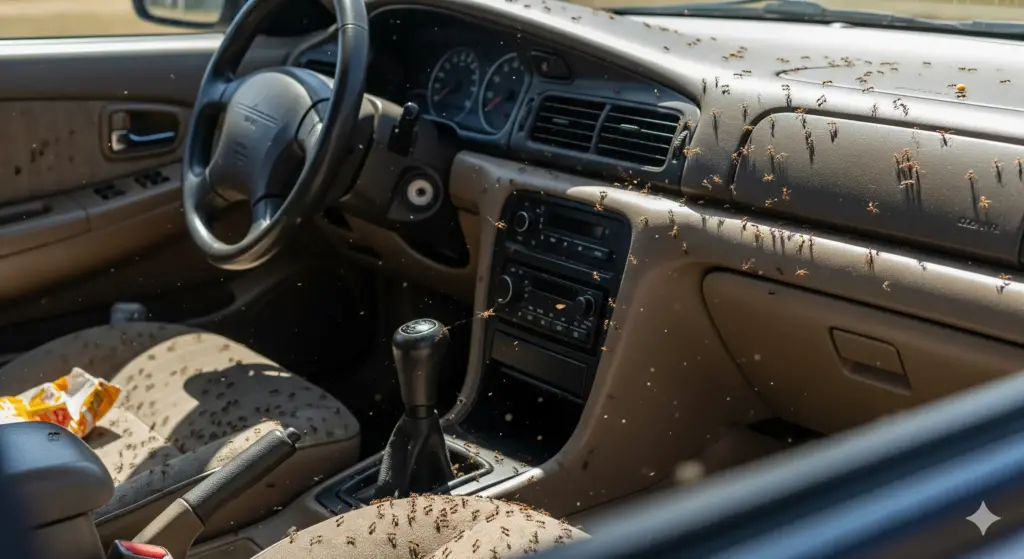
Understanding Why Ants Invade Your Car
Common Reasons Ants Enter Vehicles
Ants target vehicles for survival resources that meet their basic colony needs. Understanding these attractants helps prevent initial infestations and guides effective removal strategies[4].
Primary attractants that draw ants to cars:
| Attractant Type | Common Sources | Risk Level |
|---|---|---|
| Food residues | Crumbs, spilled drinks, candy wrappers | High |
| Sweet substances | Soda spills, juice residue, syrup | Very High |
| Moisture sources | Leaking seals, condensation, wet items | Moderate |
| Shelter opportunities | Warm engine bays, protected compartments | High |
- Pheromone trail establishment occurs when scout ants successfully locate food sources and lay chemical markers for colony members to follow. These invisible highways can persist for weeks, continuously attracting more ants even after initial food sources are removed[1].
- Weather-driven shelter seeking intensifies during extreme temperatures or rainy periods. Cars provide climate-controlled environments that protect ant colonies from harsh outdoor conditions, particularly in engine compartments that retain heat.
Types of Ants That Target Cars
Different ant species exhibit varying behaviors and preferences when invading vehicles. Identifying the specific type helps determine the most effective removal approach and predict infestation patterns.
Common car-invading ant species and their characteristics:
| Species | Size | Preferred Locations | Treatment Difficulty |
|---|---|---|---|
| Sugar ants | 2-4mm | Cup holders, consoles | Easy |
| Ghost ants | 1-2mm | Dashboard cracks, vents | Moderate |
| Fire ants | 2-6mm | Floor mats, trunk areas | Hard |
| Carpenter ants | 6-13mm | Engine bay, structural areas | Very Hard |
- Ghost ants pose particular challenges in warmer climates like Florida, where they establish multiple satellite colonies with several queens. Their translucent appearance makes detection difficult until populations reach problematic levels[3].
- Fire ants create aggressive defensive responses when disturbed, making removal dangerous without proper protective equipment. These ants often establish temporary nests in wheel wells or undercarriage areas during swarming seasons.
How Ants Actually Get Inside Your Car
Vehicle entry points vary by ant species and car design, but certain access routes remain consistent across different makes and models. Sealing these pathways prevents future infestations[4].
Common entry points ranked by frequency:
- Door and window seals – Worn weatherstripping creates gaps large enough for ant passage
- HVAC system intakes – External air vents allow direct access to interior spaces
- Wheel wells and undercarriage – Hidden areas provide undetected entry routes
- Electrical conduit openings – Wiring harness entry points lack proper sealing
- Trunk and hood seals – Older vehicles often have compromised rubber barriers
Parking location proximity significantly impacts infestation risk. Vehicles parked within 10 feet of established ant colonies face dramatically higher invasion rates, especially when parked over ant highways or near food sources.
Immediate Emergency Actions
Stop the Infestation Right Now
Time-sensitive responses prevent minor ant sightings from becoming major infestations. Immediate action disrupts established patterns and limits colony expansion into your vehicle[5].
Emergency response checklist (complete within 2 hours):
- Remove visible food sources – Empty all containers, wrappers, and loose items
- Vacuum accessible ants – Use handheld vacuum with crevice attachment
- Relocate vehicle immediately – Move at least 50 feet from current parking spot
- Document entry points – Note where ants appear most concentrated
- Apply emergency barriers – Sprinkle diatomaceous earth or cinnamon around car perimeter
Avoid common mistakes that worsen infestations, including using household sprays that scatter ants deeper into vehicle crevices or attempting to wash ants down drains where they can regroup and return.
Quick Assessment of Infestation Level
Accurate assessment determines whether DIY approaches will succeed or professional intervention becomes necessary. Different infestation levels require escalated response strategies[1].
Infestation severity indicators:
| Level | Ant Count | Distribution | Recommended Action |
|---|---|---|---|
| Minor | 5-20 ants | Single trail | DIY methods |
| Moderate | 21-100 ants | Multiple areas | Enhanced DIY + monitoring |
| Severe | 100+ ants | Throughout vehicle | Professional treatment |
| Nesting | Any with larvae/eggs | Established colonies | Immediate professional help |
Engine compartment inspection requires careful examination without disturbing electrical components. Look for ant trails along wiring harnesses, near battery terminals, and around air filter housings where colonies commonly establish.
Safety Precautions Before Treatment
Chemical treatments and electrical system interactions create potential safety hazards that require proper precautions. Protecting family members and vehicle components prevents secondary problems[6].
Essential safety protocols:
- Disconnect battery before applying treatments near electrical components
- Ensure adequate ventilation when using sprays or fumigation products
- Wear protective equipment including gloves, masks, and eye protection
- Remove pets and children from treatment areas during application
- Test products on inconspicuous areas before widespread use
Chemical interaction warnings include avoiding petroleum-based products on rubber seals, preventing overspray on painted surfaces, and ensuring compatibility between different treatment products used simultaneously.
Step-by-Step Ant Removal Process
Deep Cleaning and Debris Removal
Comprehensive cleaning eliminates attractants while exposing hidden ant activity. This foundation step determines the success of subsequent treatments[4].
Professional cleaning sequence:
| Step | Focus Area | Tools Required | Time Needed |
|---|---|---|---|
| 1. Vacuum seats | Cushions, cracks, adjustment mechanisms | Handheld vacuum, brush attachments | 15 minutes |
| 2. Clean floor mats | Remove, shake out, wash thoroughly | Hose, scrub brush, automotive cleaner | 20 minutes |
| 3. Detail console | Cup holders, storage compartments, crevices | Cotton swabs, compressed air | 25 minutes |
| 4. Sanitize surfaces | Dashboard, door panels, ceiling | Microfiber cloths, cleaner solution | 15 minutes |
- Pay special attention to areas where how long does it take a car to cool down affects ant behavior, as temperature fluctuations in parked vehicles influence where colonies establish temporary nests.
- Crevice cleaning techniques include using compressed air to blow out debris from impossible-to-reach areas, followed by vacuum extraction to remove dislodged particles and potential ant eggs.
Natural Removal Methods
Natural treatments provide family-safe alternatives to chemical pesticides while maintaining effectiveness against most ant species. These methods work through repellent properties and mechanical killing mechanisms[7].
Effective natural treatment options:
| Method | Active Ingredient | Application | Safety Rating |
|---|---|---|---|
| Peppermint oil spray | Menthol compounds | Direct spray on trails | Very Safe |
| Diatomaceous earth | Fossilized diatoms | Powder application | Safe (food-grade only) |
| Soap solution | Surfactants | Contact spray | Very Safe |
| Lemon juice barrier | Citric acid | Perimeter treatment | Very Safe |
- Essential oil effectiveness varies by concentration, with peppermint oil requiring 2-5% dilution for optimal results. Research confirms that menthol compounds in peppermint oil kill ants on contact while providing lasting repellent effects[8].
- Diatomaceous earth application requires food-grade quality and thin, even coverage. The microscopic particles cut through ant exoskeletons, causing death by dehydration within 24-48 hours. Apply sparingly to avoid respiratory irritation during cleanup.
Chemical Treatment Options
Professional-grade chemicals offer faster results and longer-lasting protection when natural methods prove insufficient. Proper selection and application ensure safety while maximizing effectiveness[9].
Recommended chemical treatments by application area:
- Interior bait stations – Terro Liquid Ant Baits for sweet-eating species
- Contact sprays – Ortho Home Defense for immediate knockdown
- Residual barriers – Advion Ant Gel for long-term protection
- Engine bay treatments – CRC QD Electronic Cleaner (ant-safe electronics cleaner)
Bait station placement strategy focuses on areas with highest ant traffic while ensuring security from children and pets. Place stations near entry points rather than in ant congregation areas to intercept scouts before trail establishment.
Professional pest control experts recommend Autvex readers consider the vehicle’s age and condition when selecting chemical treatments, as older cars may have compromised seals that allow chemical migration to unwanted areas.

Targeted Solutions by Ant Species
Sugar Ant and Sweet Ant Removal
Sugar-seeking ant species respond best to borax-based baits that exploit their carbohydrate preferences. These ants follow distinct behavioral patterns that enable targeted elimination strategies[10].
Species-specific treatment approaches:
| Ant Type | Preferred Bait | Application Method | Expected Results |
|---|---|---|---|
| Pavement ants | Sweet gel baits | Station placement | 3-7 days |
| Odorous house ants | Liquid sugar baits | Trail intersection points | 5-10 days |
| Pharaoh ants | Protein/sweet combination | Multiple small bait points | 7-14 days |
- Borax-based bait effectiveness relies on slow-acting toxicity that allows worker ants to return to colonies before death. This delayed action ensures entire colonies receive lethal doses through food sharing behaviors.
- Entry point sealing for sugar ants focuses on areas around sweet residue sources, including cup holders, console storage, and anywhere sugary drinks may have spilled and created persistent attractants.
Fire Ant and Aggressive Species Treatment
Fire ants require specialized approaches due to their aggressive defensive behavior and ability to cause painful stings. Safety equipment becomes essential when dealing with these species[11].
Protective measures for fire ant treatment:
- Long pants and closed shoes to prevent leg and foot stings
- Work gloves rated for chemical resistance
- Emergency antihistamine available for allergic reactions
- Quick retreat path planned before treatment begins
Heat treatment effectiveness takes advantage of fire ants’ temperature sensitivity. Parking in direct sunlight while running heater at maximum settings creates interior temperatures above 120°F that force ant evacuation without chemical use.
Professional-strength insecticides for fire ants typically contain bifenthrin or fipronil, requiring careful application to avoid damage to vehicle surfaces and electrical components.
Ghost Ant and Small Species Control
Ghost ants present unique challenges due to their microscopic size and ability to establish colonies in extremely small spaces. Detection often occurs only after significant population growth[3].
Detection techniques for ghost ants:
- Use magnifying glass to identify translucent workers near suspected areas
- Apply food-grade powder (cornstarch) to highlight ant trails
- Monitor at dawn/dusk when ghost ant activity peaks
- Check electrical components where colonies commonly nest
Precision gel bait placement requires application in dots smaller than peppercorns, placed directly on established trails. Ghost ants prefer protein-based baits over sweet options, making them distinct from other small ant species.
Microscopic entry point treatment involves sealing gaps smaller than 1mm using automotive-grade silicone sealant or weather stripping replacement around doors, windows, and electrical penetrations.
Professional vs DIY Treatment Comparison
When DIY Methods Are Sufficient
Most minor ant infestations respond well to homeowner treatment when applied consistently and correctly. Understanding success indicators helps avoid unnecessary professional expenses[12].
DIY success predictors:
| Factor | DIY Appropriate | Professional Needed |
|---|---|---|
| Ant count | Under 50 visible | Over 100 or nesting activity |
| Location | Interior only | Engine bay or electrical |
| Species | Sugar/pavement ants | Fire ants or carpenter ants |
| Duration | Recent (under 1 week) | Established (over 2 weeks) |
| Homeowner comfort | Confident with treatments | Uncomfortable with chemicals |
- Cost-effective solution timeline typically spans 5-14 days for successful DIY elimination, with total material costs ranging from $15-50 for most infestations. Success rates exceed 80% when homeowners follow complete treatment protocols.
- Timeline expectations for DIY success include initial population reduction within 24-48 hours, followed by gradual elimination over the following week as bait takes effect throughout the colony structure.
Professional Pest Control Benefits
Professional intervention becomes valuable when infestations exceed DIY capabilities or when safety concerns make homeowner treatment inadvisable. Specialists bring advanced tools and experience[13].
Professional advantages over DIY approaches:
- Species identification expertise ensures appropriate treatment selection
- Commercial-grade equipment reaches inaccessible areas safely
- Follow-up service guarantees provide peace of mind
- Insurance coverage protects against treatment-related damage
- Time savings for busy vehicle owners
Engine compartment nest removal requires specialized knowledge of automotive electrical systems and proper chemical selection that won’t damage sensitive components like sensors, wiring harnesses, or computer modules.
Long-term warranty coverage from professional services typically includes 30-90 day guarantees with free retreatment if ants return, providing better value for severe infestations.
Cost Analysis and Treatment Effectiveness
Economic considerations influence treatment selection, but hidden costs of incomplete DIY attempts often make professional service more cost-effective for moderate to severe infestations[14].
Treatment cost comparison:
| Treatment Type | Initial Cost | Success Rate | Time Investment | Hidden Costs |
|---|---|---|---|---|
| DIY natural | $10-25 | 65% | 4-6 hours | Repeated attempts |
| DIY chemical | $25-50 | 75% | 2-4 hours | Product waste |
| Professional | $150-300 | 95% | 1-2 hours | None |
| Multiple DIY attempts | $50-150 | Variable | 8-12 hours | Vehicle damage risk |
- Insurance considerations may cover professional pest control under comprehensive coverage when ants cause electrical damage. Check with insurance providers before attempting DIY repairs on expensive electrical systems.
Understanding how to get a car with bad credit history becomes relevant when ant damage affects vehicle value or creates safety issues that impact insurance coverage.
Preventing Future Ant Invasions
Car Cleanliness Maintenance
Consistent cleaning protocols eliminate ant attractants before they establish colony interest. Preventive maintenance costs significantly less than reactive treatment[15].
Weekly maintenance checklist:
- Remove all food items including emergency snacks and pet treats
- Vacuum floor mats and seats using crevice tools for thorough coverage
- Wipe interior surfaces with automotive cleaner that removes residue
- Empty and clean cup holders where spills commonly accumulate
- Inspect and clean cargo areas including spare tire wells
Spill cleanup protocols require immediate attention to prevent sugar residue establishment. Use warm, soapy water followed by thorough drying to eliminate both visible contamination and residual attractants.
Food storage restrictions should limit edible items to sealed, ant-proof containers stored in locations that won’t contaminate vehicle interiors if containers fail.
Strategic Parking and Location Awareness
Parking location dramatically influences ant invasion risk. Understanding environmental factors enables proactive prevention strategies[2].
High-risk parking locations to avoid:
| Location Type | Risk Level | Primary Concerns |
|---|---|---|
| Under trees | Very High | Dropping food sources, ant highways |
| Near trash areas | High | Established ant colonies nearby |
| Over ant hills | Extreme | Direct access to vehicle undercarriage |
| Damp areas | Moderate | Moisture attraction for various species |
| Unmaintained lots | High | Overgrown vegetation harbors colonies |
- Seasonal parking adjustments account for ant activity cycles, with spring and fall swarming periods requiring extra precautions. Summer heat drives ants seeking shelter, while winter parking may require different considerations in warmer climates.
- Garage storage benefits include climate control that makes vehicles less attractive to shelter-seeking ants, plus controlled environment for implementing preventive treatments.
Long-Term Deterrent Strategies
Sustained protection requires ongoing deterrent applications and environmental modifications. Long-term approaches prove more cost-effective than repeated reactive treatments[16].
Monthly deterrent maintenance:
- Essential oil barrier refresh – Reapply peppermint or citrus oil around vehicle perimeter
- Seal inspection – Check and repair weatherstripping, door seals, window gaps
- Diatomaceous earth renewal – Replace protective powder barriers around parking areas
- Early warning monitoring – Document any ant sightings for pattern analysis
Environmental modifications include removing ant attractants from parking areas, trimming vegetation that provides ant highways, and addressing moisture sources that attract various species.
Record keeping benefits help identify seasonal patterns, effective treatment methods, and early warning signs that enable proactive responses before infestations establish.
Emergency Troubleshooting and Advanced Problems
When Ants Return After Treatment
Treatment failure indicators suggest incomplete colony elimination or ongoing attractant sources. Systematic troubleshooting identifies root causes for more effective secondary treatments[17].
Common reasons for treatment failure:
- Incomplete bait consumption by target ant species
- Multiple colony locations not addressed in initial treatment
- Ongoing food sources not identified during cleaning
- Inadequate entry point sealing allowing recolonization
- Wrong treatment type for specific ant species present
Re-treatment timing considerations require waiting 7-14 days between chemical applications to avoid ant behavioral changes that reduce bait acceptance. Natural treatments can be reapplied more frequently without resistance development.
Hidden nest discovery methods include following ant trails during peak activity periods (dawn/dusk), using non-repellent tracking powders, and systematic inspection of potential nesting sites throughout the vehicle.
Engine Compartment and Electrical Concerns
Electrical system ant infestations require specialized approaches that protect sensitive automotive electronics while effectively eliminating colonies. Improper treatment can cause expensive damage[18].
Safe engine bay treatment protocols:
| Step | Procedure | Safety Requirements |
|---|---|---|
| 1. Disconnect battery | Remove negative terminal first | Insulated tools only |
| 2. Document wire locations | Photo complex connections | Reference for reassembly |
| 3. Apply contact cleaner | Use electronics-safe products | Adequate ventilation |
| 4. Allow complete drying | 24-hour minimum before reconnection | Moisture detection |
- Wire damage assessment requires careful inspection of insulation, connector integrity, and potential ant-caused short circuits. Professional automotive electricians may be necessary for complex electrical troubleshooting.
- Professional consultation requirements apply when ants establish nests near airbag systems, engine management computers, or other safety-critical electronic components where DIY treatment risks personal safety.
Dealing with Ant Damage to Car Interior
Ant activity can cause lasting damage to upholstery, electrical systems, and interior components. Understanding repair options and insurance implications helps minimize long-term costs[19].
Types of ant-related vehicle damage:
- Upholstery staining from ant waste products or treatment chemicals
- Electrical shorts from ant bodies in sensitive circuits
- Odor contamination from dead ant accumulation in inaccessible areas
- Surface etching from acidic ant secretions on plastic or metal
- Structural weakening from carpenter ant tunneling activities
Professional restoration services may be necessary for extensive damage, particularly in luxury vehicles where replacement parts carry premium pricing. Document all damage with photographs for insurance claims.
Insurance claim considerations vary by policy type and damage extent. Comprehensive coverage may include pest-related damage, while liability coverage typically excludes biological contamination. Contact insurance providers immediately when significant damage occurs.
For those considering vehicle replacement due to extensive ant damage, understanding financing options becomes important. Autvex provides valuable guidance on automotive financial decisions and vehicle selection criteria.
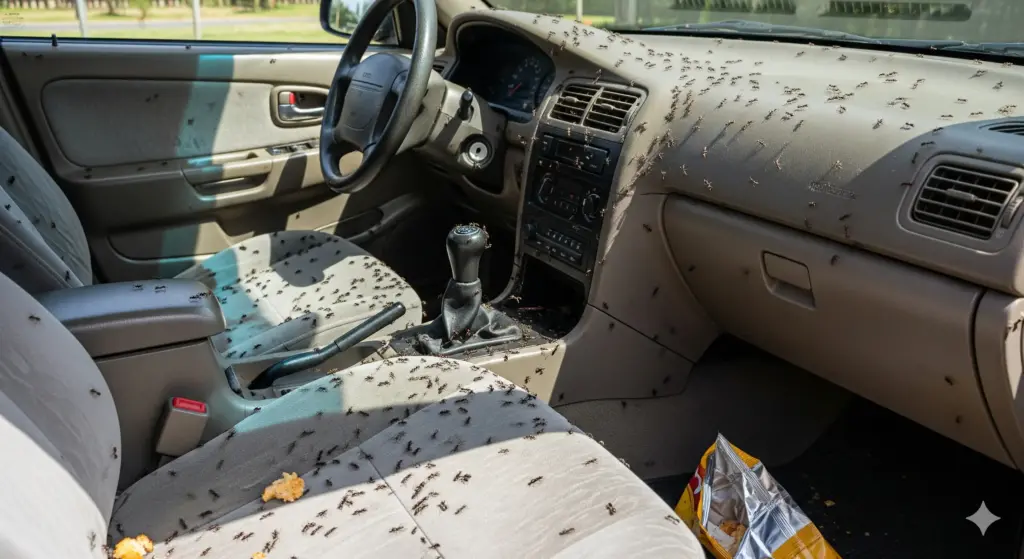
Key Takeaways
- Act immediately when ants appear – Quick response prevents minor sightings from becoming major infestations that require professional intervention and expensive treatments
- Identify ant species correctly – Different species require different treatment approaches, with ghost ants needing protein baits while sugar ants respond to sweet baits
- Use integrated treatment approaches – Combine deep cleaning, natural deterrents like peppermint oil, and strategic bait placement for maximum effectiveness
- Focus on prevention through cleanliness – Regular vacuuming, spill cleanup, and food restriction eliminate attractants more effectively than reactive treatments
- Choose treatments appropriate for your situation – DIY methods work for minor infestations under 50 ants, while professional help becomes necessary for engine bay nests or aggressive species
- Monitor and maintain long-term protection – Monthly essential oil applications and seal inspections prevent reinfestation more cost-effectively than repeated treatments
- Address underlying moisture and entry point issues – Seal weatherstripping gaps and fix water leaks that create ongoing attractants for shelter-seeking ant colonies
Frequently Asked Questions
Can ants damage my car’s electrical system?
Yes, ants can cause significant electrical damage by creating short circuits when they build nests in wiring harnesses or crawl into sensitive electronic components. Fire ants and carpenter ants pose the highest risk, with repair costs potentially exceeding $1,000 for damaged engine computers or airbag systems[18]. Professional treatment becomes essential when ants establish colonies near electrical components.
What’s the fastest way to kill ants in my car?
The fastest contact kill method uses peppermint essential oil spray, which eliminates ants within seconds of direct contact. Mix 2 teaspoons of peppermint oil with 2 cups of water and spray directly on ant trails[8]. However, this only eliminates visible ants and doesn’t address the colony source, so follow up with bait stations for complete elimination.
Are ant sprays safe to use inside vehicles?
Most household ant sprays contain chemicals that can damage automotive plastics, fabrics, and electronics. Use only automotive-specific products or natural alternatives like soap solutions (3 tablespoons Dawn soap in 2 cups warm water) that won’t harm interior surfaces[4]. Always test products on inconspicuous areas first and ensure adequate ventilation during application.
How long does it take to completely eliminate car ants?
Complete elimination typically requires 5-14 days depending on infestation severity and treatment method. Bait stations show initial results within 24-48 hours, with full colony elimination taking 7-10 days as the poison spreads throughout the nest[10]. Severe infestations with multiple colonies may require 2-3 weeks of sustained treatment.
Can ants build permanent nests in cars?
Yes, ants can establish permanent colonies in vehicles, particularly in engine compartments, door panels, and HVAC systems where they find warmth, moisture, and protection. Ghost ants commonly nest behind dashboards, while carpenter ants may tunnel into structural foam materials[3]. Professional removal becomes necessary once nesting occurs.
Will moving my car solve the ant problem?
Moving your car disrupts ant trails and prevents new ants from following established pheromone paths, but won’t eliminate ants already inside the vehicle. Relocate at least 50 feet from the original parking spot and combine with cleaning and treatment for effective results[5]. This strategy works best for minor infestations caught early.
What attracts ants to cars with no visible food?
Ants detect microscopic food residues, sweet-smelling air fresheners, sugary drink spills that have dried, and even soap residues that contain glycerin. Modern vehicles also provide ideal shelter with stable temperatures and protected spaces[2]. Moisture from air conditioning condensation or leaking seals additionally attracts ants seeking water sources.
Should I use professional pest control for car ants?
Professional treatment becomes advisable when DIY methods fail after 2 weeks, when ants establish nests in engine compartments, for aggressive species like fire ants, or when infestation exceeds 100 visible ants. Professionals achieve 95% success rates versus 75% for DIY chemical treatments[13]. Cost ranges from $150-300 with service guarantees.
How do I prevent ants from coming back?
Maintain weekly cleaning schedules, apply monthly peppermint oil barriers around your parking area, inspect and replace damaged weatherstripping, and avoid parking near ant colonies or under trees. Store any food items in sealed containers and address moisture issues from leaking seals or HVAC systems[15]. Prevention costs significantly less than repeated treatments.
Are natural ant remedies effective in cars?
Natural remedies like diatomaceous earth, peppermint oil, and soap solutions achieve 65-75% success rates for minor infestations, making them effective first-line treatments. Food-grade diatomaceous earth kills ants within 24-48 hours through dehydration, while peppermint oil provides both immediate kill and long-term repellent effects[7]. Combine multiple natural methods for better results.
References
- Simple Pest Control. (2025, March 11). 5 Tips for Getting Rid of Ants in Your Car. https://www.simplepest.com/ants/tips-for-getting-rid-of-ants-in-your-car/
- Yang, S. (2024, June 26). Invasive ants spread by hitchhiking on everyday vehicles. Virginia Tech News. https://news.vt.edu/articles/2024/06/cals-hitchhiking-ants.html
- Hoffer Pest Solutions. (2025, June 30). Florida Ghost Ants in Car: How to Identify & Eliminate Them. https://www.hofferpest.com/blog/2025/july/florida-ghost-ants-in-car-how-to-identify-elimin/
- Orkin. (2024, December 3). How do I get rid of ants in my car? https://www.orkin.com/ask-orkin/get-rid-of-ants-in-car
- Star Car Wash. (2025, May 20). How Do I Get Rid of Ants in My Car? https://www.starcarwash.com.au/blog/how-do-i-get-rid-of-ants-in-my-car
- KiwiCare. (2023, November 5). Ants & Spiders in Vehicles & How to Get Rid of Them. https://www.kiwicare.co.nz/advice/pests/ants-and-spiders-in-vehicles-and-how-to-get-rid-of-them/
- Today’s Homeowner. (2025, March 23). Diatomaceous Earth for Ants: Complete DIY Guide. https://todayshomeowner.com/pest-control/guides/diatomaceous-earth-for-ants-complete-diy-guide/
- Nature Pest Control. (2025, March 29). Natural Way to Kill Sugar Ants That Actually Work. https://www.naturepest.com/natural-way-to-kill-sugar-ants-that-actually-work-2/
- CNN Underscored. (2025, June 23). 15 best ant killers, according to pest control experts. https://www.cnn.com/cnn-underscored/home/best-ant-killer
- DIY Pest Control. (2022, June 21). Ant Baiting Tips. https://diypestcontrol.com/baiting.htm
- Consumer Affairs. (2024, March 7). Pest Control Statistics 2025. https://www.consumeraffairs.com/homeowners/pest-control-statistics.html
- Better Termite. (2025, July 21). Ants in Car? Expert Solutions to Remove Them Completely. https://bettertermite.com/ants-in-car/
- Nature Pest Control. (2024, November 24). Have a Car Ant Infestation? Here Is What You Can Do. https://www.naturepest.com/have-a-car-ant-infestation-here-is-what-you-can-do/
- Pest Control Technology. (2025, April 29). 2025 State of the Ant Control Market Report. https://www.pctonline.com/article/2025-state-of-the-ant-control-market-report-sponsored-by-syngenta/
- Toyota of Orlando. (2024, November 5). Ants in your car? Here’s how to get rid of them. https://www.toyotaoforlando.com/blogs/6087/ants-in-your-car-heres-how-to-get-rid-of-them
- Recon Pest Services. (2025, January 1). No More Ants In Your Car: How To Keep ‘Em Out For Good! https://reconpestservices.com/ants-in-your-car/
- All U Need Pest Control. (2023, November 16). How to Get Rid of Ants in Your Car. https://alluneedpest.com/blog/how-to-get-rid-of-ants-in-your-car/
- Red National. (2025, August 10). What are the challenges of removing ant nests from vehicles? https://redinational.com/what-are-the-challenges-of-removing-ant-nests-from-vehicles/
- Market Data Forecast. (2025, March 12). Ant Control Market Size, Share, & Analysis Report, 2033. https://www.marketdataforecast.com/market-reports/ant-control-market

I am a senior automotive analyst at Autvex. Expert vehicle evaluations, in-depth reviews, and objective analysis helping readers make informed automotive decisions with years of industry experience.

